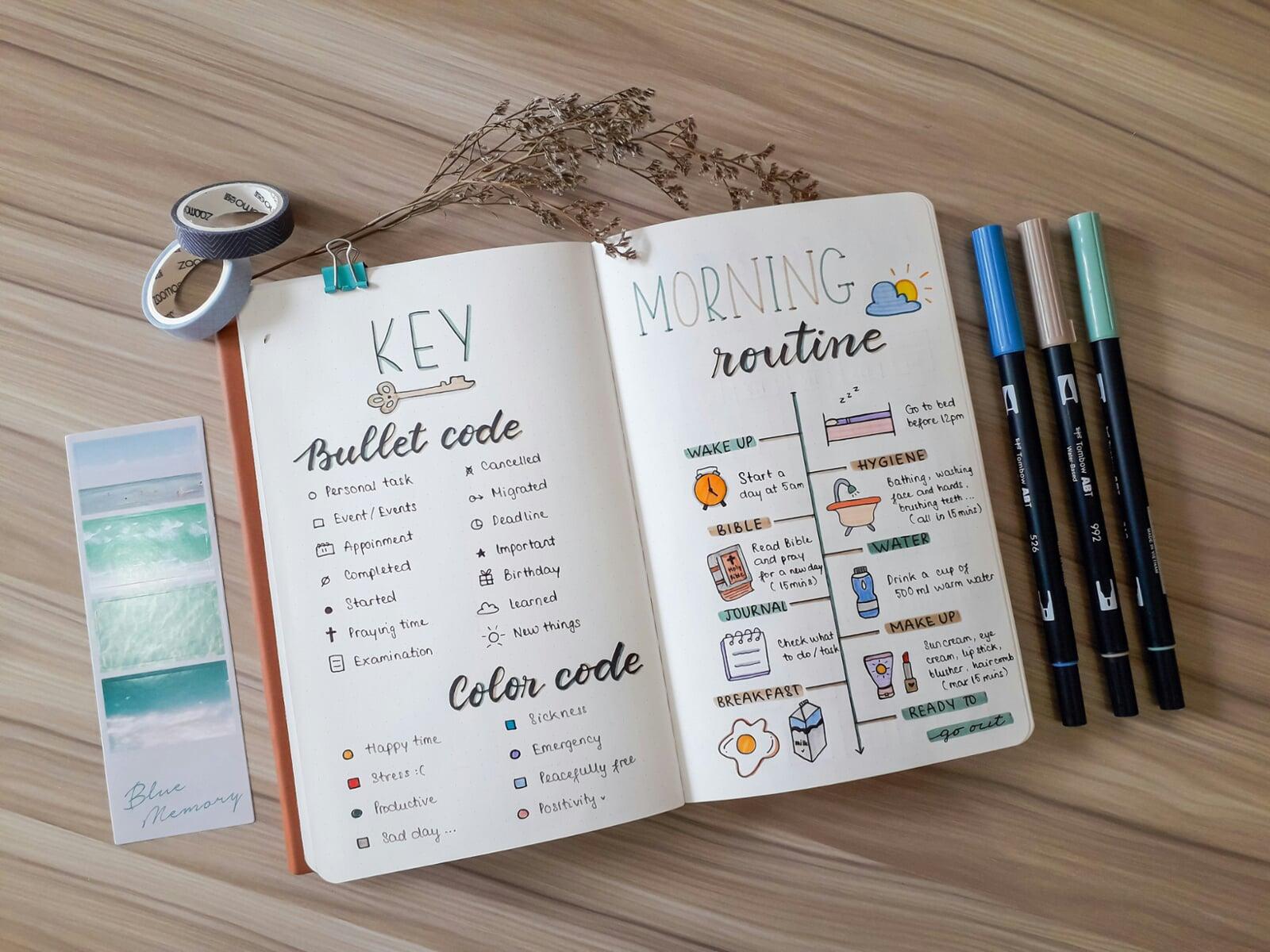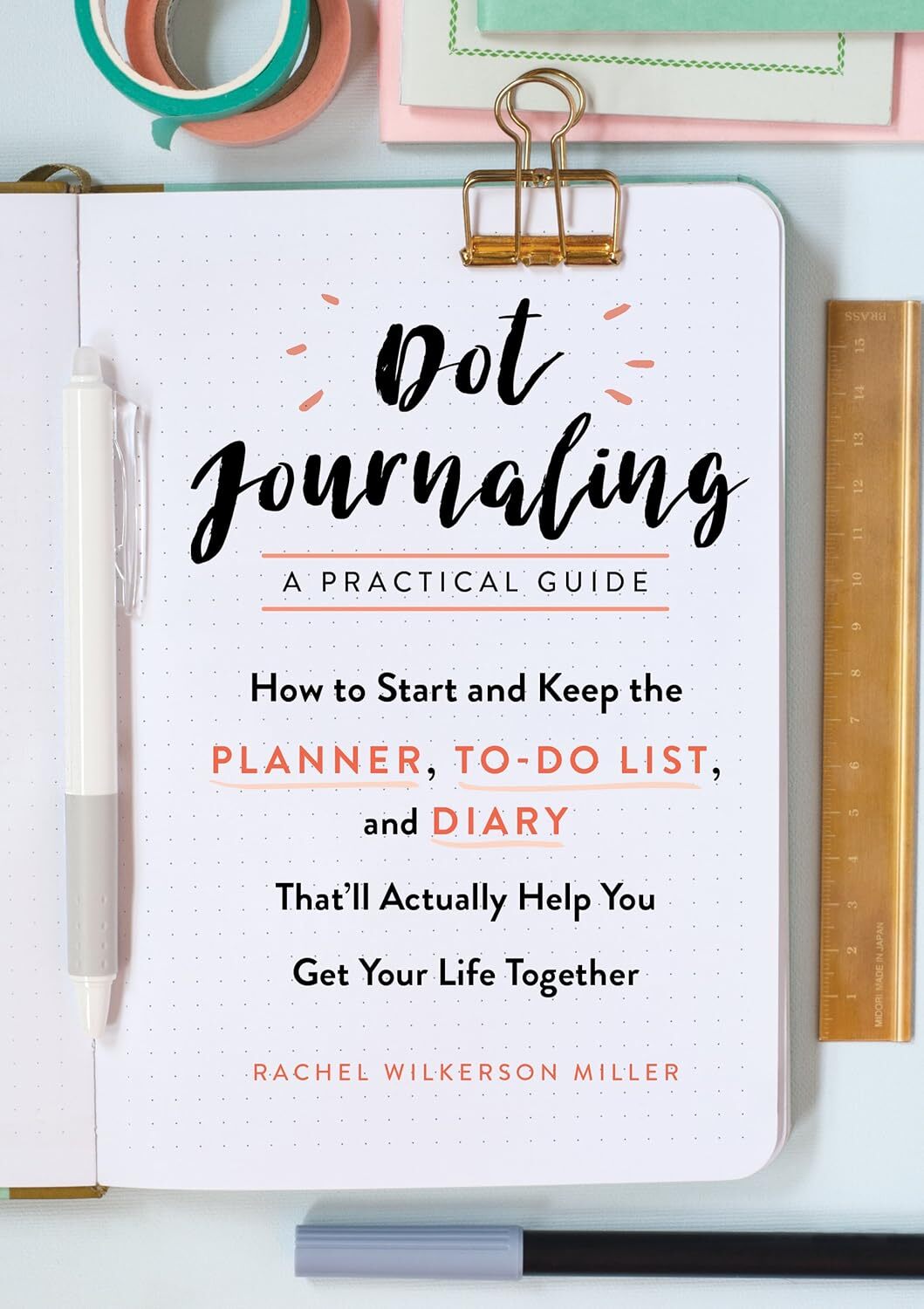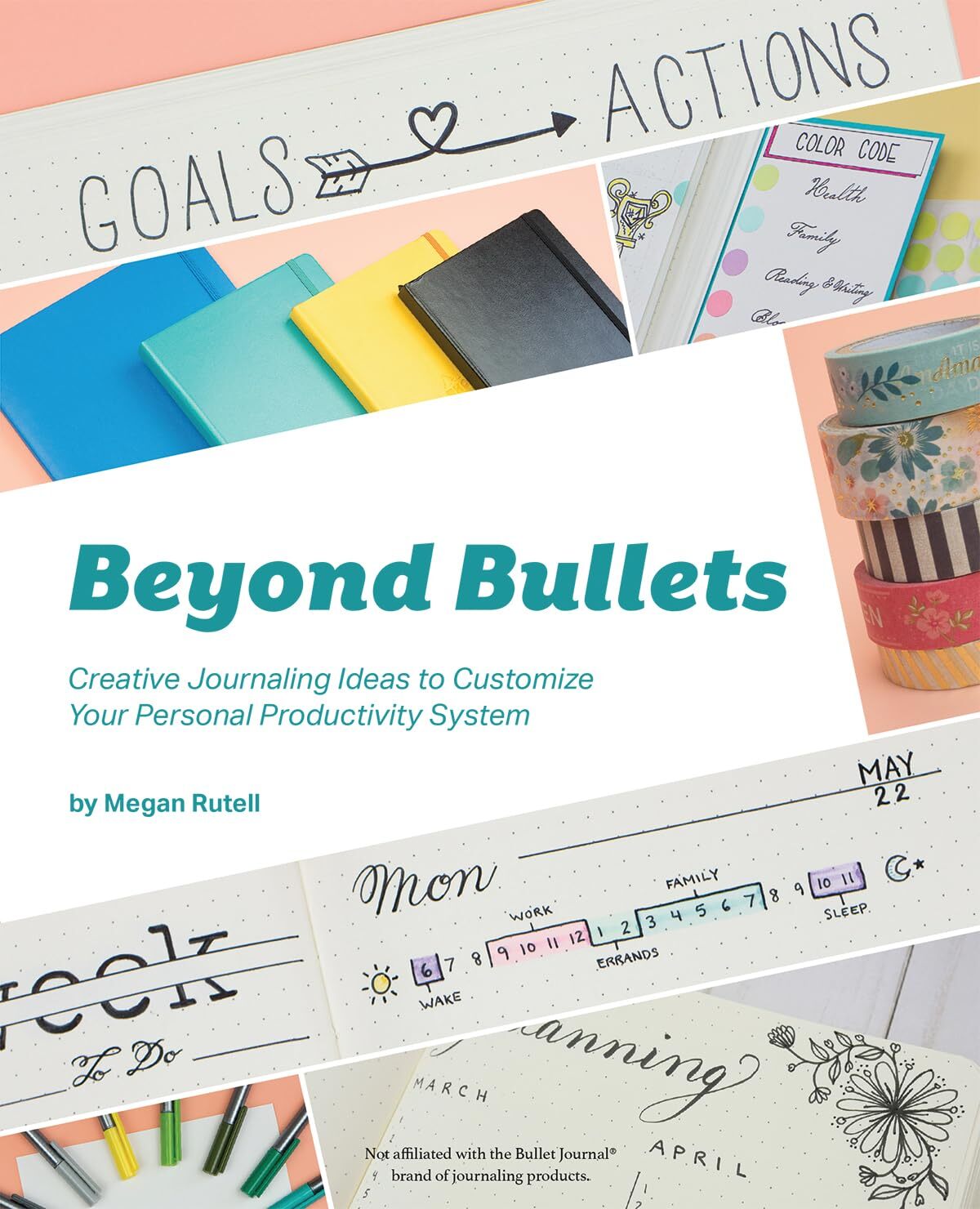Bullet Journal
Organize Your Recovery Journey with Intentional Tracking

Introduction
Bullet Journal is a flexible, customizable system for tracking tasks, appointments, symptoms, and personal goals in a structured yet creative format. For cancer survivors, it serves as a powerful tool to manage schedules, monitor health, and foster a sense of control and purpose across all recovery stages.
What You Need To Know
How To Do It
Instructions:
1. Select Tools
Choose a notebook (preferably with a grid or dot layout). Select pens; possibly use different colors & highlighters. Note: digital app may be an excellent choice for many people.
2. Prepare Your Space
Set aside a quiet space and 10–15 minutes to start.
3. Create Your Layout
Here are a few suggestions:
- Create an Index: Reserve the first 2–3 pages to list page numbers and topics for easy reference.
- Build a Future Log: Dedicate a page for upcoming months to note appointments or major recovery milestones.
- Design a Monthly Log: List dates and key tasks (e.g., chemo sessions, follow-ups) for the current month.
- Start a Daily Log: Use bullet points for tasks (•), events (○), and notes (–) each day.
4. Track Key Areas
Use symbols to categorize entries (examples, * for priority, ! for insights). Include:
- Medical appointments and medication schedules.
- Symptoms (e.g., fatigue, pain) with a 1–10 severity scale.
- Self-care activities (e.g., rest, nutrition, light exercise).
- Emotional check-ins or personal goals.
5. Create Collections
Dedicate pages to specific recovery topics, like:
- Symptom tracker (e.g., chart pain or energy levels).
- Medication log (dose, time, side effects).
- Recovery goals (e.g., walking 10 minutes daily).
6. Identify Patterns
Look for patterns (e.g., fatigue triggers, chemo brain cycles, etc.).
7. Review and Reflect
At the end of each day or week, check completed tasks (e.g. mark with X), migrate unfinished ones (>), or cancel irrelevant ones (/).
8. Handle Overwhelm Gently
If journaling feels daunting, start with 2–3 daily entries. Simplify layouts as needed.
9. Update Regularly
Spend 5–10 minutes daily updating your journal. Review monthly to adjust for recovery changes.
10. Conclude Mindfully
End each session by noting one positive action or insight to reinforce progress.
Helpful Tips:
- Start simple: Use minimal layouts (e.g., daily lists) if new to journaling.
- Personalize it: Add doodles or colors to make it engaging, if desired.
- Stay flexible: Adapt layouts to match your energy and recovery phase.
- Track consistently: Daily entries build clearer health patterns.
- Use symbols: Keep entries concise with bullet journal shorthand.
- Combine with mindfulness: Pair with a brief gratitude note for emotional balance.
- Protect privacy: Store your journal securely to maintain confidentiality.
- Consult your care team: Share symptom trackers with doctors for better care.
- Celebrate progress: Acknowledge small wins to stay motivated.
Related Topics:
Strongly Related
Reduce Stress:
[Links to related web pages]
[Links to related web pages]
Issue C:
[Links to related web pages][Links to related web pages]
Moderately Related
Issue B:
[Links to related web pages]
[Links to related web pages]











